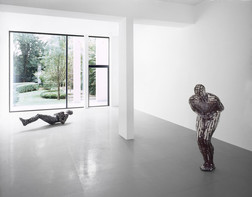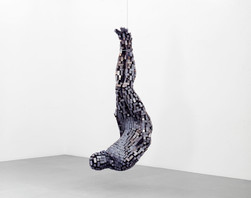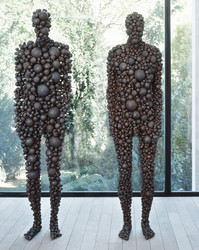Antony Gormley
12 September—31 October 2002
6 rue St-Georges | St-Jorisstraat
| 1 | / | 6 |
×
Since the beginning of his career in the late seventies, Antony Gormley has consistently taken the human body as the central, most exclusive medium for his art. A significant work for him is, by definition, a place in the world, like the body that is inhabitated by the spectator or the artist. Gormley has become a sculptor because only sculpture is able to apprehend the world through the body, the first of all places, thus confronting the individual with the matter of his or her own life. His sculptures are not representations or allegories of the human figure but try to embody its inner place. They are not added to the space where they are positioned; they make or become that space. Gormley uses sculpture to establish a link between the inner and outer worlds, to constantly revisit the realms of the inside and the outside.
Those who have seen the previous exhibition of Antony Gormley in this gallery will surely remember the “Insiders”, the minimal, skeletonlike sculptures that visualize the core of the human figure. At first sight, the new works look completely different because they constitute open spaces and use fragmented matter.
Gormley sees them however as logical continuations of the “Insiders” because they connect this same core with the energy field the body generates through its continuous exchange with the outside world. By bursting the enveloppe, he is revealing the body as a dynamic construction of atoms, molecules and particules, as a complex entity with a surface, an inside and an outside that seem to be in permanent mutation.
The exhibition consists of a series of sculptures that propose different modular shapes. In the first exhibition room, Antony Gormley is showing “Bodies in Space V”, a sculpture that redescribes the living body as a formation of spherelike elements in different sizes. It is a materialisation of the atoms and molecules that bring the body into continuous movement and represent it as a field of innumerous possibilities. Once again, the sculpture is made of pure iron, that primordial ingredient of the earth, whose molten core of magma, releases the necessary energy to generate the movement of our planet. Each particle is a hand made object and has the shape of a perfect ball. This is very important to Gormley because, by this means, he is able to include the consciousness of the maker into the process of the production and to add an intimate side to the industrialized world, which he does not condamn, but prefers to critically re-imagine.For the first time in his career – with the exception of one single shark, dating from 1984 – Gormley is including an animal in the exhibition: a dog, who, in the exhibition room, is looking for the nearby presence of the human figure.
Antony Gormley positions “Here and There” in the hall, as a direct reference to the previous exhibition.
In 1998, that same spot was occupied by “One and Other”, a standing sculpture that, by its complete enclosement, imposed an overwhelming silence. “Here and There” is showing that same figure, but at the moment he is breaking through his inner concentration, to face the world and look the public right in the eyes.
The three sculptures on the main floor form a structure of small, iron blocks. Antony Gormley considers them as an attempt to recover the body of the virtual world, of its new existence determined by pixels and binary codes. The block pieces look like firm contructions that start form the heart, the core of the human body. In the centre, Gormley uses the tightiest matrix and follows the shape of the body as closely as possible. After that, he slowly opens up the pattern in order to let the blocks float more freely across the corporal field. The three sculptures deal with various aspects of the embodiment and the idea of inequilibrity: they hang, lie down or stand in completely contorted postures. Gormley himself is speaking about the phenomenons of distress, disorder and disease and says his inspiration comes from Pompeï: although critics have been making comparisons for years now between his sculptures and the natural moulds of human bodies that have been formed in the lava after the eruption of the volcano, the artist has only visited the site this year for the first time. Out of this experience grew three sculptures that combine the idea of inequilibrity with the form of abundance. This baroque element is especially striking in “Lying Pompei”, whose posture is very similar to the “Santa Teresa” by Bernini, expressing the same state between death and ecstasy.
“Trajectory Field III” brings an evocation from the body as energy. This sculpture breaks the contour and removes the dilemma between inside and outsight. What we get to see is the body as an open field, a dynamic constellation of small metal bars that draw an outline in the space. There is no question of substance anymore, but rather a trace that has been left by the flow of energies that runs in, through and around the body. “Trajectory Field III” offers the spectator a myriad of different point of views and through the continous reflection from the light on the bars, balances on the realm between form and mirage.
“Capacitator II” on the first floor, shows the rupture of the envelopped body by way of a true explosion. This potent way of conscious embodiment is given form by representing the body as a concentrated, dark core, a black hole, surrounded by a cloud of long, metal skewers that fix the optical moment of the explosion.
Somewhat isolated in the small room behind the library, Antony Gormley has installed the “Foreign Bodies”, 2 enclosed figures, assembled out of a set of small and somewhat larger balls. At first sight, they make us think of the works by Arcimboldo, the 17th century Italian painter, who meticulously reconstruced the human face by means of vegetables, fruit and flowers. With “Foreign Body I”, this idea of careful reconstruction is very much present. Every ball receives a proper place in the matrix and stands free from the surrounding elements. “Foreign Body II”, on the contrary, gives the impression to follow an autonomous system on which the maker has lost all control. The balls are falling together like the pieces of a complex, tridimensional puzzle and form an immovable unity. Moreover, the sculpture gives the impression of being extremely heavy, almost melancholic, as if it has to carry on its own the weight of humankind.
Related Exhibitions
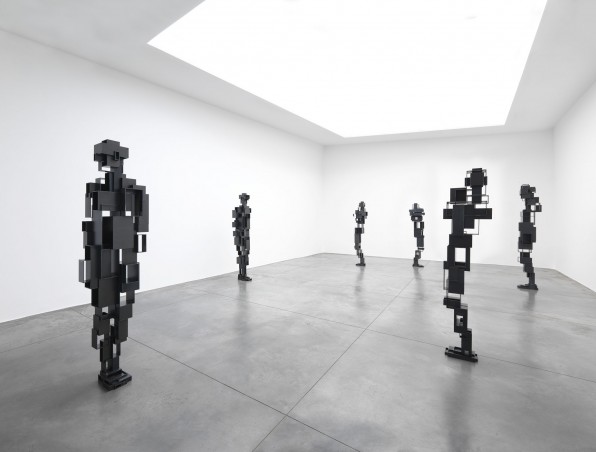
Antony Gormley: LIVING ROOM
9 March—8 April 2017
6 rue St-Georges | St-Jorisstraat
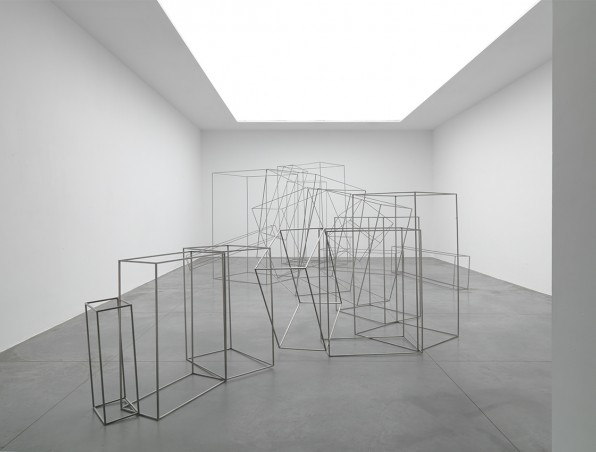
Antony Gormley: according to a given mean
28 March—4 May 2013
6 rue St-Georges | St-Jorisstraat

Antony Gormley: Aperture
17 September—22 October 2009
6 rue St-Georges | St-Jorisstraat
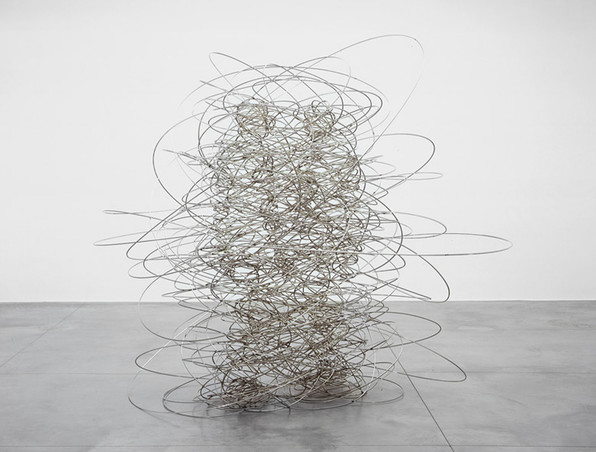
Antony Gormley: You and Nothing
14 September—21 October 2006
6 rue St-Georges | St-Jorisstraat

Antony Gormley: Insiders and Other Recent Work
21 January—1 March 1999
6 rue St-Georges | St-Jorisstraat
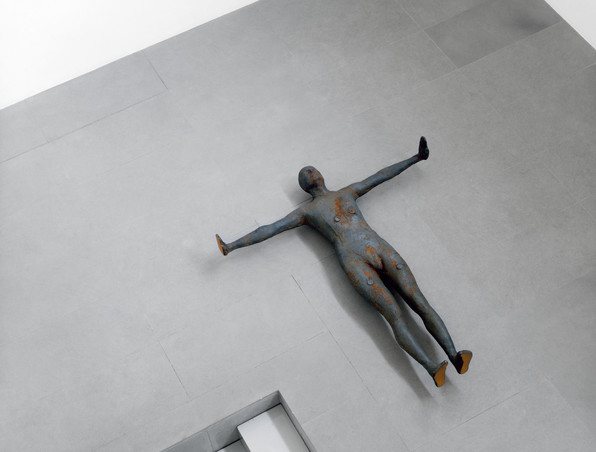
Antony Gormley: Inside the Inside
8 June—14 September 1996
6 rue St-Georges | St-Jorisstraat

Antony Gormley
28 April—30 May 1987
65 rue de l’Église St-Gilles | St-Gilliskerkstraat



